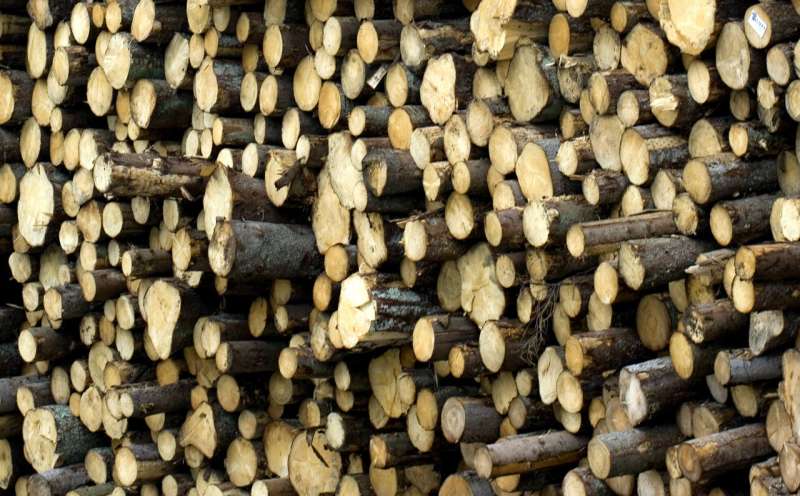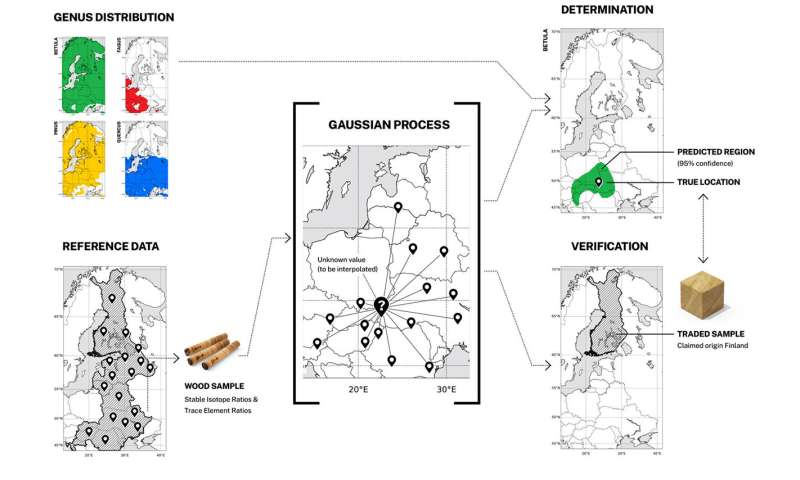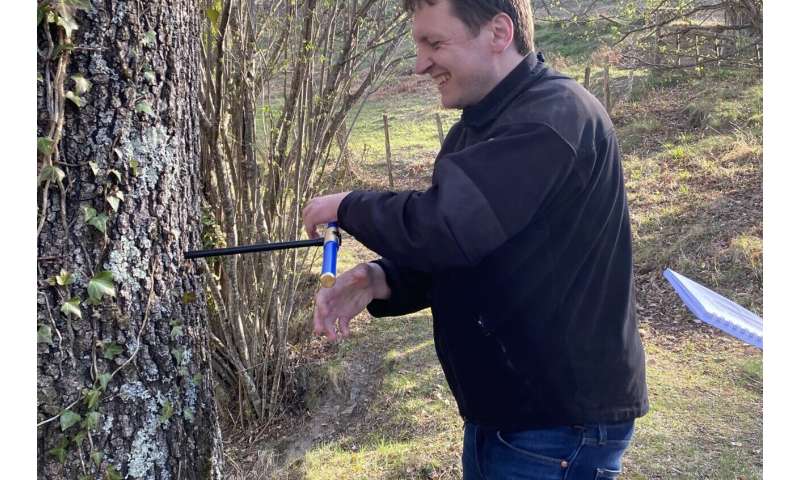This article has been reviewed according to Science X's editorial process and policies. Editors have highlighted the following attributes while ensuring the content's credibility:
fact-checked
peer-reviewed publication
trusted source
proofread
New method predicts harvest location to reveal illegal timber exports

A new method of timber analysis developed by researchers from the University of Gothenburg can confidently identify the location in which the tree was harvested. The method has been developed with the aim of combating illegal timber imports from Russia and Belarus.
Illegal logging and the associated trade in wood products is a global problem that threatens some of the world's most important ecosystems. Researchers are trying to combat this practice with a new scientific method that can reveal where a tree has been harvested. The researchers present their findings in a paper titled "A framework for tracing timber following the Ukraine invasion" in the journal Nature Plants.
"The issue became even more urgent after Russia's full-scale invasion of Ukraine in February 2022. Russian timber continues to be exported to the EU and the US despite imposed sanctions, by falsifying the origin of the timber. Illegal timber exports are partly financing Russia's war," says Jakub Truszkowski, researcher in computational biology at the University of Gothenburg.
Chemical footprint
A growing tree is affected by its environment. Soil composition, environmental pollution and climate leave a chemical footprint in wood tissue, and this is what the researchers use to determine its origin. First, a large collection of reference material is required. Then, using machine learning, the researchers can determine whether the stated harvest location of the sample is correct.
"We collected 900 wood samples from 11 Eastern European countries, including Belarus and Russia. We selected oak, birch, pine and beech, all of which are important in the timber trade. By analyzing and comparing isotope ratios and the concentrations of 15 different trace elements in wood tissue, we can determine the harvest location of the tree within a 200 kilometer radius," says Truszkowski.
-

By analyzing isotope ratios and trace elements in the wood, researchers can deduce where the timber was harvested. Credit: Jakub Truszkowski -

Tree samples were collected in 11 Eastern European countries to create a large reference material. Credit: Victor Deklerck
Useful worldwide
The study led to the creation of a comprehensive reference database on Eastern European timber, tailored to products under sanctions after the invasion of Ukraine. These data facilitated the development of methods to verify the authenticity of timber origin claims and even predict the location of harvest.
"We would like to refine our method so that we can further increase the accuracy and confidence in our predictions. It is still under development and will get better the more data we get," says Truszkowski.
While this study focused on the illegal timber trade in Eastern Europe, the method is applicable all over the world. It is estimated that more than half of tropical timber may be harvested illegally.
"It is important to protect highly biodiverse forests from illegal logging. By tracing the origin of timber, we can combat this practice," says Truszkowski.
More information: Thomas Mortier et al, A framework for tracing timber following the Ukraine invasion, Nature Plants (2024). DOI: 10.1038/s41477-024-01648-5
Journal information: Nature Plants
Provided by University of Gothenburg





















